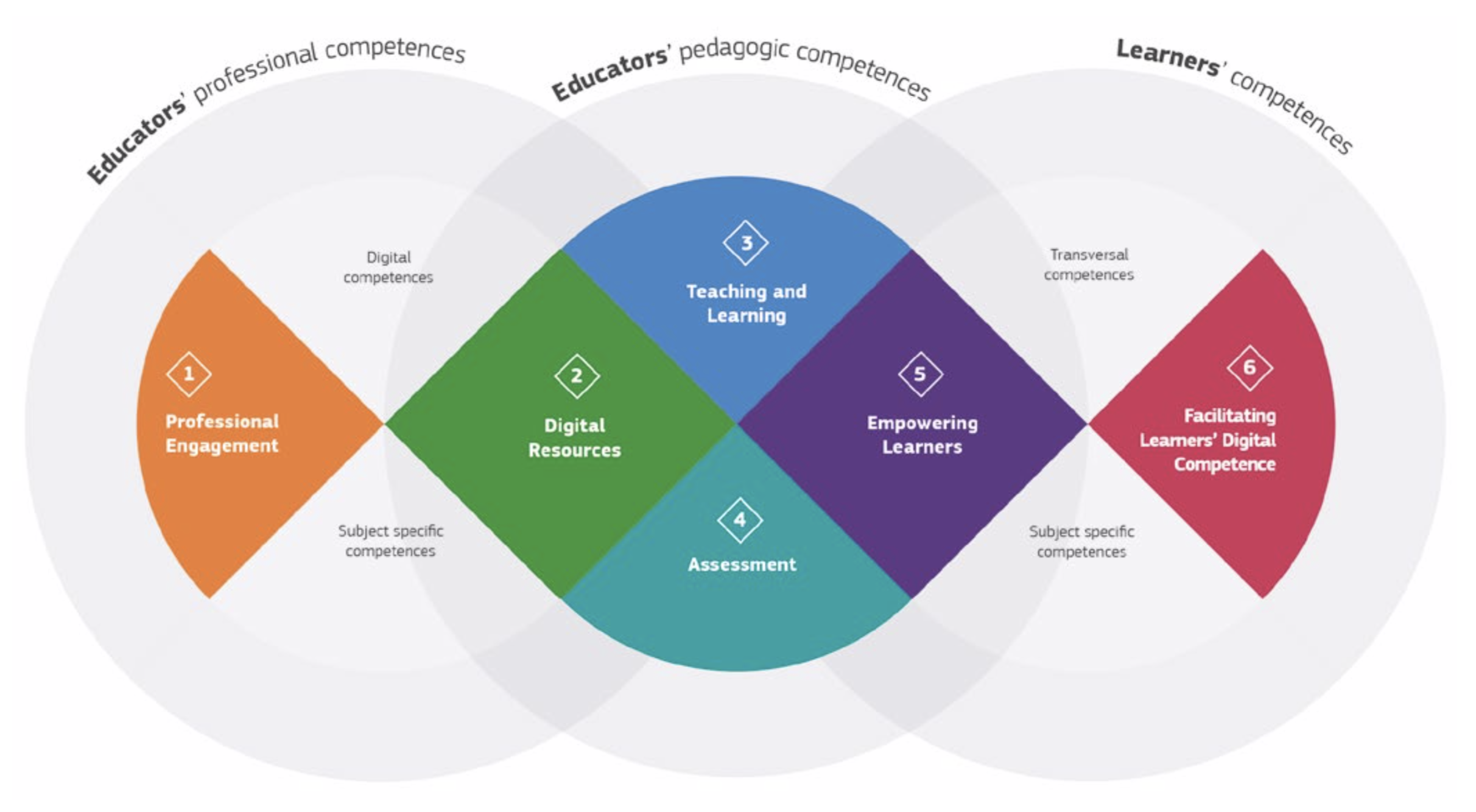Why use a framework like DigCompEdu?
We now live and work in a digital world. Technology infuses many of our interactions, our creativity, and our day-to-day work in education. More recently, we've had to learn to cope quickly (when the pandemic put us all in remote mode). And as we have become more adapted, hopefully we can see how it might be possible to flourish in a digital age (having discerned the advantages, and learned effective ways of working).
The European Digital Competence Framework for Educators provides a common language where we can compare, what the opportunities for future professional development might be. It takes a simple approach to identify 6 broad areas, and helps you to see how confident you are in each of these.
What is the DigCompEdu Framework?
The European Framework for the Digital Competence of Educators is a standardised scheme that provides a reference and guide for working with teachers’ digital competencies. It identifies 6 useful categories of activity relevant to teaching in a digital context, which are divided into a list of specific competences.
The framework aims to show how digital technologies can be used to support professional development in education and training. The emphasis is not purely on technical skills, but places a focus on the teaching and learning context. The framework, in it’s own words, aims to “provide a common language and logic as a starting point for developing, comparing and discussing different instruments for developing educators’ digital competence, at national, regional or local levels”.
Punie, Y., editor(s), Redecker, C., European Framework for the Digital Competence of Educators: DigCompEdu, available at https://ec.europa.eu/jrc/en/digcompedu

There are 6 areas of competences:
- Professional Engagement
Using digital technologies for communication, collaboration and professional development. - Digital Resources
Effective and responsible use, creation, evaluation and sharing of digital resources. - Teaching and Learning
Managing and using different digital methods and tools in teaching and learning. - Assessment
Applying different digital methods and tools in assessment and feedback. - Empowering Learners
Using digital technologies to empower students and make the learning environment more accessible, personalized, inclusive and student-centered. - Facilitating Learners’ Digital Competence
Supporting and facilitating students in developing their digital competencies.
Download the detailed framework
Read more about the framework
Why use the DigCompEdu framework?
DigCompEdu provides educators with a systematic approach to develop their digital competencies and foster their students’ digital literacy. The framework also provides a set of proficiency levels. For each competence, there are six different stages through which an educator’s digital literacy may progress. A self-assessment tool can help identify individual training needs and areas for future development.
Institutions or organisations may be able to use the results from these self-assessments to develop their training and professional development strategies. The framework also allows organisations and projects to adapt it to their particular needs and contexts.
DigCompEdu Check-In tool
